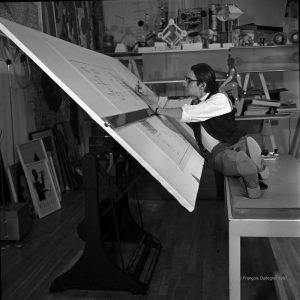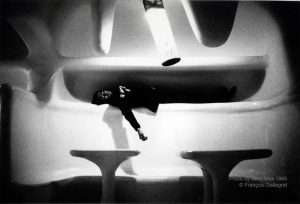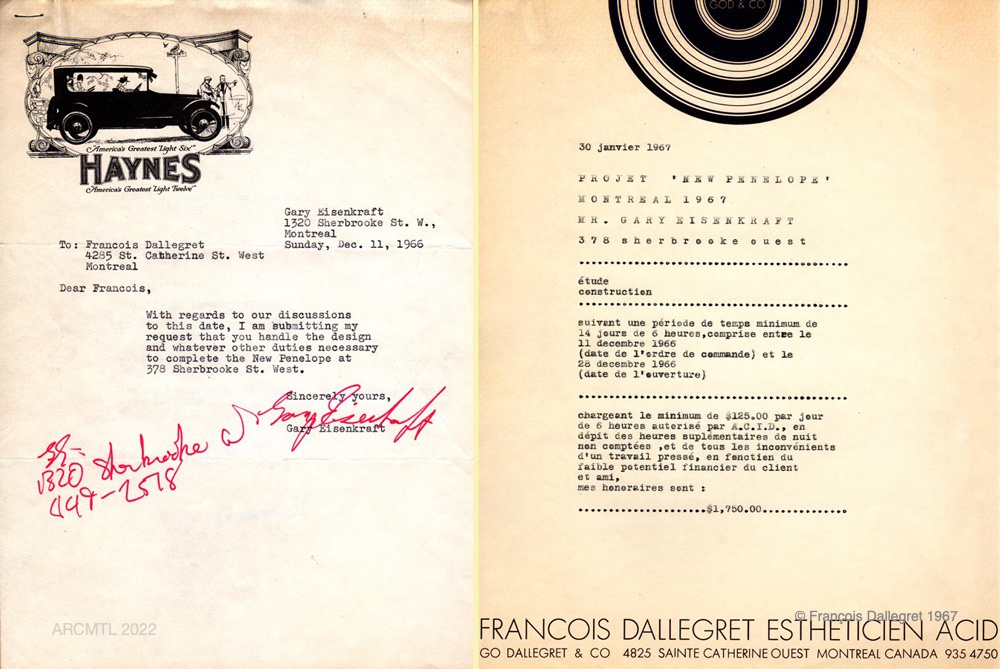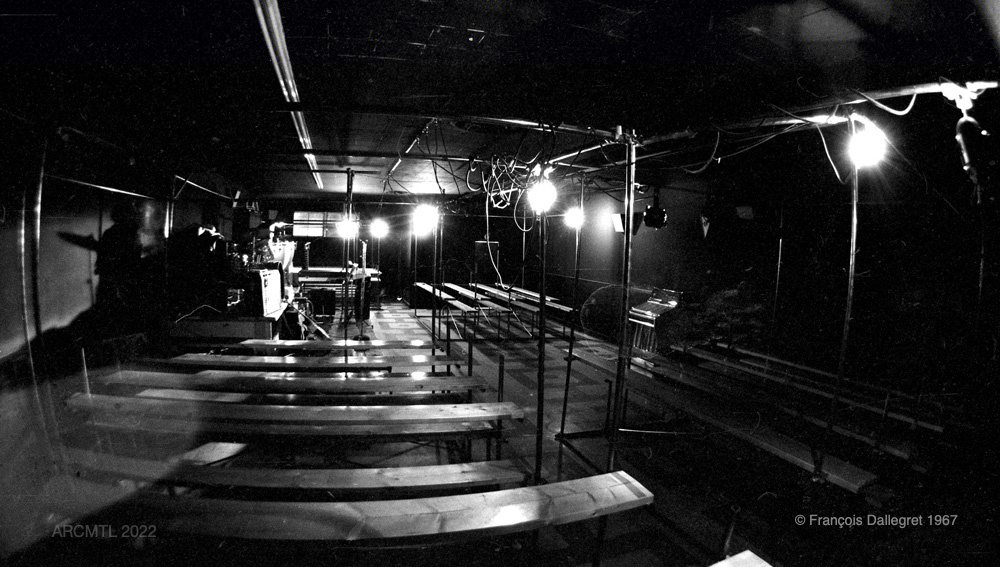Not Your Typical Concert Venue!
When The New Penelope opened, on Sherbrooke Street, in 1967, no one had seen anything like it! Its design was definitely unusual for its time.
A new designer in town
In 1963, a young French artist, named François Dallegret, left Paris for America. After living for a time at the Chelsea Hotel, in New York City, he moved to Montreal. His first architectural project was designing Le Drug, a drugstore/ discotheques/ restaurant/ gallery on de la Montagne Street, in downtown Montreal, in 1965. Le Drug as well as his avant-garde work for Expo 67 and other projects gained him a reputation as a highly original, eccentric artist and designer. Dallegret’s extraordinary imagination helped him quickly establish himself in Montreal’s cultural and social scenes.
Listen to the audio clip with transcript: “Super Party: Dallegret’s alternative Expo 67 opening”.
From Le Drug to The New Penelope
Gary Eisenkraft was among the hip crowd that frequented Le Drug at the time, and was intrigued by the futuristic decor. So, in December 1966, he hired Dallegret to design the interior of the new New Penelope on Sherbrooke Street.
Listen to the audio clip with transcript: “Dallegret’s design for Le Drug”.
The work schedule and budget for the project were tight and restrictive. Fortunately, Dallegret came up with a minimalist, flexible solution that was adaptable. He designed the space around metal scaffolding with lighting fixtures, and wooden plank seating.
As the stage and seats were moveable, the layout of the room could change to suit each band and concert. When the bright lights came on between performances, the audience would see tangled electronics. With its unapologetic industrial aesthetic, Dallegret reinvented the coffeehouse of the time.
I’m very much into the temporary side, the fast side, the side of things that appear, disappear, etc.
― François Dallegret (interview with ARCMTL, 2015)
Listen as Louis Rastelli talks to François Dallegret, in 2015, about the principles that guided him in designing the original interior of The New Penelope, on Sherbrooke Street, in 1966:
Listen to the audio clip with transcript: “The new New Penelope as told by its designer”.
Many former New Penelope concertgoers agree that the seating was not very comfortable. Yet they also agree that once the music started, it didn’t matter much!
If his Le Drug and The New Penelope interiors do not exist anymore, some of his other projects are still part of Montreal’s visual landscape, such as his outdoor concrete seating at the Olympic Stadium (1978) and the logo for the Canadian Center for Architecture.





